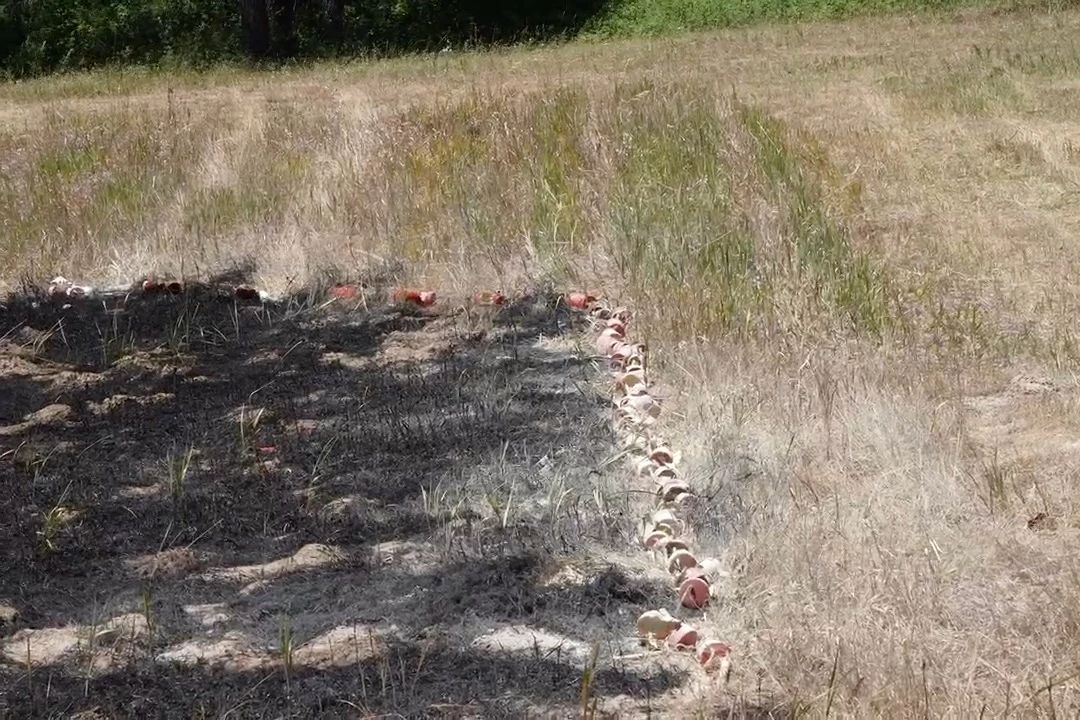If you live on an acreage, there's a constant risk that your home may be consumed by a brush fire. That's where the Blaze Barrier comes in, as it forms a flame-activated fire-retardant boundary line around the user's house.
Ordinarily, in order to protect a home from an advancing brush fire, firefighters have to dig a dry-vegetation-free trench around the dwelling. Not only does this require a lot of physical effort, it also takes up time that could be spent fighting the fire on other fronts.
Described as being "the world's first fire-line-in-a-box," the Blaze Barrier is intended to be a user-deployed alternative to such trenches. It was created by Washington-state-based product designer/engineer Jacob Schuler, and is currently the subject of a Kickstarter campaign.

Looking much like a string of giant firecrackers, the Blaze Barrier is being offered in 50- and 100-foot (15- and 30.5-m) lengths. Each of its red cardboard modules is filled with a proprietary non-toxic powder that incorporates monoammonium phosphate, which is commonly utilized in both fire extinguishers and fertilizers.
After receiving a warning of a brush fire in their area, the user starts by staking one end of the Blaze Barrier line to the ground. They then simply walk across what will presumably be the path of the oncoming fire, dispensing the rest of the line as they go. The whole process is claimed to take less than one minute.
Once the barrier has been deployed between the fire and the home, the user evacuates their property.

When and if the fire reaches the Blaze Barrier, the flames ignite a fuse on each module, which in turn sets off a small explosive charge. The resulting mini explosion shoots the fire retardant powder out 5 feet (1.5 m) to either side of the module, ideally extinguishing the flames on one side while keeping the other side from catching fire in the first place. The expended powder can be left on the ground to biodegrade, once all the excitement is over.
Importantly, the modules are activated specifically by exposure to flames, not just by heat. And if the fire never does reach the Blaze Barrier, the whole thing can just be stuffed back in its box for next time.
Assuming the Blaze Barrier reaches production, a pledge of US$195 will get you a 50-ft kit, with $395 required for a 100-footer. The planned retail prices are $395 and $795, respectively.
The system is demonstrated in the following video.
Sources: Kickstarter, Blaze Barrier
Note: New Atlas may earn commission from purchases made via links.








